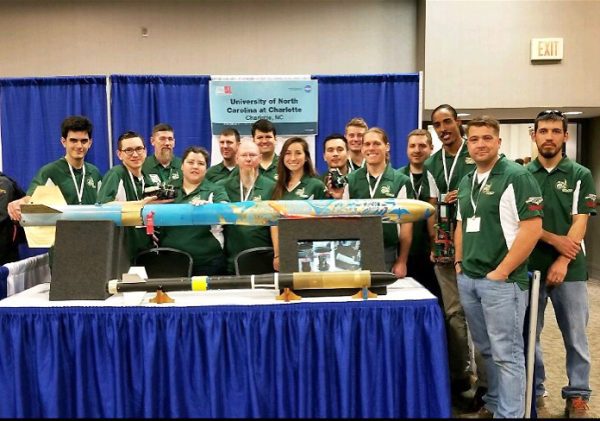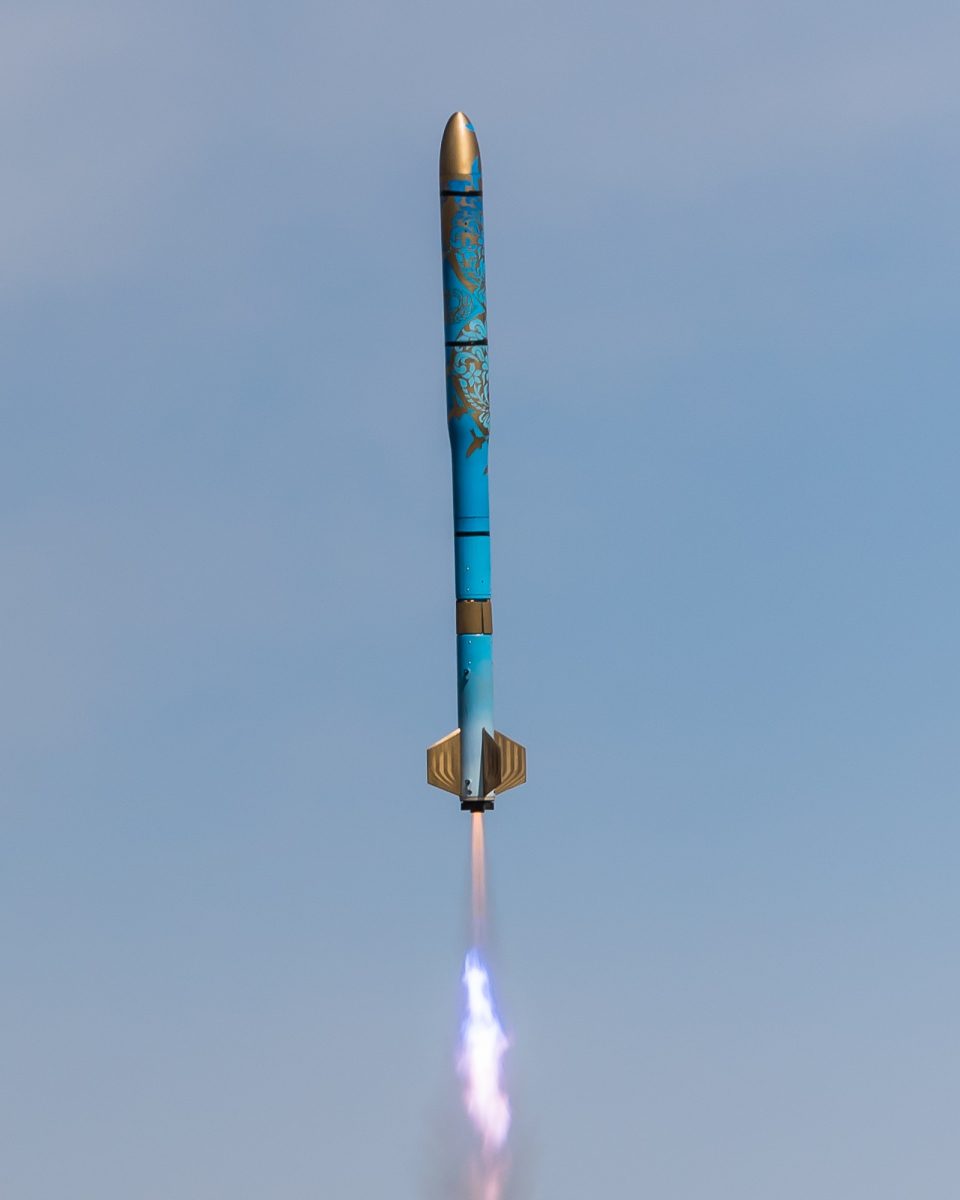49ers Place 2nd in the Nation in NASA Student Launch Competition

The results of NASA’s 2018 Student Launch competition are tabulated, and The William States Lee College of Engineering’s 49er Rocketry Team placed second in the nation, the highest finish in the team’s history. First place went to Vanderbilt University’s Aerospace Design Lab team, the team’s fourth win in the past five years.
Student Launch is NASA’s annual competition that challenges competing student teams to propose, design, build and test a reusable rocket that flies to one mile in altitude, deploys a recovery system and returns safely to the ground, while carrying a payload of scientific or engineering value. The teams compete in 10 categories ranging from payload design to educational engagement.
The student members of the 49er Rocketry Team for 2018 were Jennifer Adams, Tijon Clark, Brandon Crotty, Taylor Forte, Jose Giacopini, Andrew Hiller, Ashton Johnston, Pedro Regalado Vera, Dallas Solomon and Micheal Stokes.

UNC Charlotte’s faculty mentor for the 2018 team was Dr. Chris Vermillion of Mechanical Engineering and Engineering Science. “This year’s 49er Rocketry Team showed tremendous work ethic, initiative and attention to detail in its design, documentation and performance at the NASA Student Launch competition,” Dr. Vermillion said. “I am extremely proud of the team for continuing the very strong legacy of 49er rocketry.”
The 49ers have fielded six rocket teams in the past seven years, and almost all have place in the top 10 overall. For 2018, the team’s individual results included:
- First place – Project Documentation and Presentation
- Second Place – Best Payload
- Second Place – Best Looking Rocket
- Second Place – Safety
“Documentation and presentation is one of the most important categories,” said team mentor and Ph.D. student Jerry Dahlberg. “The team spent a lot of time perfecting their documentation, and could explain all their design decisions in minute detail. This was very important to the judges, and earned the team a lot of points.”
For the 2018 competition, teams could develop one of three payload options. The 49ers choose to design and build an autonomous rover, which had to exit the rocket after landing, travel at least five feet and deploy a solar panel. The team’s rover was a tank design that used treads for movement.

“One challenging part of going with the tank design was developing a retention system that would keep the rover in place during flight, but allow it to exit on landing,” Dahlberg said. “You don’t know what orientation the rocket is going to land in, so the team came up with a tube-within-a-tube design that used a mechanism to rotate the rover so it would come out in the proper direction. Our team was a good mix of systems engineering, mechanical engineering technology, electrical engineering and mechanical engineering students. It had a lot of strengths, and came up with and executed a good design.”
The student team leader for 2018 was Ashton Johnston of electrical engineering. Johnston’s summary of the year-long project follows:
“The 49er Rocketry Team started preparations for the competition in June of 2017 with fundraising events and a summer build to test new design ideas. This gave us a chance to gain valuable manufacturing and design experience, and raise money for the upcoming competition builds. When the Request for Proposals went out in August there were three options for the payload: Object Detection, Coordinate Triangulation, and an Autonomous Rover. We immediately decided on the rover and started figuring out how to make it work. What followed was an eight month roller coaster of three full design reviews, two rocket builds, countless outreach presentations and fundraising efforts, and then finally, the competition launch.
“The vehicle team built two beautiful high-powered rockets: a sub-scale rocket (Tiny Rick) and the full-scale competition rocket (Rocket Rick). Tiny Rick was launched three times during the fall semester and even crashed once, but, due to the modular design, it was easily repaired and flew again the following week. These flights helped us refine the full-scale design prior to its manufacture and proved the stability of the design. The launch team did an outstanding job during the full-scale test flight. After being rained out twice, we had one chance before the mandatory flight date to do a fully integrated system test. Months of building, testing, and verification paid off with a perfect flight of the full-scale rocket despite high winds.
“The payload team designed a remarkably robust and foolproof system that integrated easily with the vehicle despite the very tight tolerances we were dealing with. The competition launch was a huge success. We came in only 101 ft. off from the 5,380 ft. goal, in large part due to the Drag Modulation System that has been developed over the last few years. The rover was also fully successful and ended up being one of the only rover’s to complete all of the mission requirements.
“The team is thrilled with our second place finish! This is the highest UNC Charlotte has ever placed in the USLI competition, and we’re hoping for a 1st place victory next year. We couldn’t have done it without the endless support of our mentors: Dr. Chris Vermillion, Jerry Dahlberg, and Charlie Ogino; or the support of our family, friends, and UNC Charlotte community.”
Images from the competition week are available on at NASA’s Marshall Space Flight Center Flickr account: www.flickr.com/photos/nasamarshallphotos/albums/72157667664273118
Archived launch-day footage is available on NASA’s Student Launch Facebook account: www.facebook.com/NASAStudentLaunch/